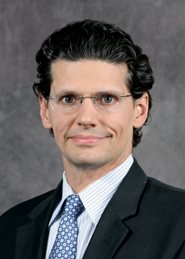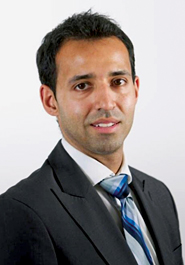As brokers see increased appetite by U.S. investors for stocks in Brazil and Japan, electronic trading executives report that these two markets are ripe for a huge jump in electronic trading.
“We have clients who two years ago didn’t trade algorithmically in Asia or Brazil and are now starting to do so,” said Greg Treacy, a director in global execution services at Bank of America Merrill Lynch. “Also, the clients who were trading electronically two years ago have now ramped up their operations even more. I don’t see any signs that this trend is abating.”

Several countries, including Japan and Brazil, are seeing their markets move into the next phase of electronic trading, as brokers look to meet the demands of U.S. investors seeking higher returns.
For electronic trading to take hold, countries require fragmented markets, wider trading spreads and advancements in technology, according to Mani Singh, head of non-dollar electronic sales at Citi. Japan and Brazil are currently experiencing all of the above.
“Some of the things we’ve seen that are tipping points in market micro structure in these countries are advancements in trading technology, co-location, fragmentation and the introduction of dark pools,” Singh said. “Markets that have these characteristics are more conducive to electronic trading.”
Market prognosticators have pointed to the attractiveness of Japanese stocks, which are rebounding after the effects of the 2011 earthquake and tsunami there. The Nikkei index is predicted by some to end the year up 30 percent. Also, equity markets in Brazil are forecast to rebound – with the BMFBovespa index forecast by the most optimistic to end the year up 32 percent.
In Japan, increased fragmentation has led more investors to trade electronically. BofA’s Treacy said roughly 25-30 percent of all trades, excluding high-frequency in Japan, are done either DMA or algorithmically – a figure he expects to grow. He told Traders Magazine that fragmentation, along with greater investment interest, will play a part in that growth. While the Tokyo Stock Exchange remains the primary trading exchange, other proprietary trading systems (akin to ATSs in the U.S.), such as Chi-X Japan and Japan Next, have emerged. Combined, these newcomers saw their volumes peak at 6.5 percent of the Tokyo’s share in January of 2012.
“While not as fragmented as the U.S., Japan is trending in that direction,” Treacy said, noting that with more venues sprouting up electronic trading will increase in kind. “We are confident that over time Japan will get to a critical mass where more locals will enter the market and fragmentation will increase. It’s a question of time; not if, but when.”
There are other reasons investors are deciding to trade algorithmically in Japanese equities. Treacy said the narrowing of spreads in Japanese equities, as well as in Asia overall, are contributing to the trend.
According to the broker’s data, the spread on an average Nikkei 225 stock is approximately 17 basis points, wide by U.S. standards, but narrower than previously in Japan.. To negotiate capturing that wide spread, investors are using basic algorithms such as volume weighted average price or percent of volume to trade. Approximately 80 percent of all BoAML algorithmic trades in Japan are executed using these two strategies, he added.
“While investors use POV and VWAP widely, a strategy such as POV is very reactive,” Treacy said. “We are working to get clients to migrate to more proactive strategies such as price arrival or adaptive shortfall. Over time these strategies will perform better than VWAP.”
Advancements in trading technology have also aided in the increase in electronic trading in Japan and Brazil, Citi’s Singh said. He said that over the last 18 months significant advancements in trading technology, along with other regulatory changes, have resulted in an evolving trading landscape for emerging markets.

For example, Singh said that Japan’s Tokyo Stock Exchange has upgraded its technology infrastructure over the last couple of years. Most recently, the exchange introduced its next generation trading platform, “Arrowhead,” which processes orders within five milliseconds. This compares to between two to three seconds for the system it replaces. The bourse now also has the ability to distribute and display a deeper order book—with capability to handle 46 million orders per day compared to 7 million on the old platform.
And Brazil’s BMFBovespa is currently upgrading its infrastructure to increase message throughput to upwards of 200 million messages per second. This advancement has allowed high-frequency traders to participate in the market. Singh added HFTs now constitute approximately 12 percent of cash equity trading in Brazil.
“This message throughput is an important attribute to enable HFTs to provide liquidity in these markets,” Singh said. “They need certain core characteristics to allow their models to run efficiently. Among the most critical are speed, throughput and infrastructure for direct connections.”



